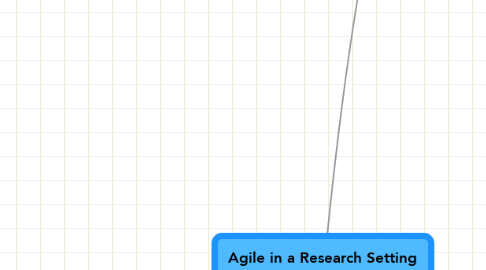
1. Useful Ideas from Start Ups
1.1. Start Ups
1.1.1. come about to search for a sustainable, profitable and scalable business model
1.1.1.1. create new markets, enter/resegment existing market (transitional state)
1.1.1.1.1. Core
1.1.1.1.2. Adjacent
1.1.1.1.3. Disruptive
1.1.2. have a culture that attracts smart, creative and motivated people
1.1.3. see greatest risk as customer development
1.1.3.1. 4 Questions
1.1.3.1.1. 1. Do consumers recognize that they have the problem that you are trying to solve?
1.1.3.1.2. 2. If there was a solution would they buy it?
1.1.3.1.3. 3. Would they buy it from us?
1.1.3.1.4. 4. Can we build a solution for that problem?
1.2. Start Ups where each employee can articulate WHY they exist usually last longer
1.2.1. what is the potential impact of idea?
1.2.1.1. who cares?
1.2.1.2. what do they care about?
1.2.1.3. what does success look like?
1.2.1.4. Able to articulate idea in terms of impact to target beneficiary (without technical details)
1.2.1.4.1. This is important not just for securing funding, but to guide every decision they make!
1.3. Start Ups do NOT survive long if they are precious about:
1.3.1. the solution
1.3.1.1. they need to be quick to explore the problem/product space
1.3.1.1.1. they get good at:
1.3.1.1.2. doing it all in very tight timelines
1.3.1.2. "Doing the right thing is more important than doing the thing right" Peter Drucker
1.3.2. how they solve the problem/opportunity (the tools & techniques used)
1.3.2.1. Teams are usually cross-functional and have diverse skill sets/knowledge
1.3.2.1.1. They are deeply connected and committed to the WHY rather than the HOW
1.4. Start Ups ruthlessly make explicit their assumptions and constraints and challenge them
1.4.1. pragmatic, deliberate, extremely lightweight risk management
1.4.2. working out the best way to make progress with incomplete information
1.4.2.1. they don't get stuck in analysis paralysis
1.4.2.2. nor faster use of brute-force strategies
1.4.2.3. TIP: they spend time making explicit their assumptions and work out which ones will provide the highest learning and prioritise experiments according to that
1.5. Start Ups promote innovative ideas through
1.5.1. promoting diversity
1.5.1.1. talent
1.5.1.1.1. people from diverse backgrounds and demographics
1.5.1.2. thought
1.5.1.2.1. making it safe to speak up and safe to fail
1.5.2. providing autonomy
1.5.3. connecting to the purpose
1.5.3.1. passionate
1.5.4. serendipity has a greater influence than we often acknowledge IMO
1.6. Possible cross-over with Research
1.6.1. Many problems/opportunities for Research Labs are well defined, some are exploratory
1.6.1.1. even initiatives with a well defined problem space could learn from Start Up ideas around:
1.6.1.1.1. speed of search across state space: pivot, perserve or stop
1.6.1.1.2. they are very good at challenging their own assumptions
1.6.1.1.3. they drive behaviour and decisions from the WHY (not so precious on the HOW)
2. Useful Ideas from Agile
2.1. time-boxed small experiments (fast build-measure-learn cycles/iterations)
2.1.1. what's the fastest, cheapest, easiest way to test that idea?
2.1.2. demonstrated progress (learnings) at end of each timebox
2.1.2.1. high visibility
2.1.3. An Iteration provides needed focus on execution without interruptions
2.1.4. Timeboxing benefits
2.1.4.1. Establishes a limit to amount of work in progress
2.1.4.2. Forces you to choose your highest prioirity
2.1.4.3. Demonstrates progress
2.1.4.4. Avoids unnecessary perfectionism
2.1.4.5. Motivates closure
2.1.4.6. Improves predictability
2.2. baby improvements/learnings
2.2.1. small wins builds momentum and confidence
2.2.2. "A journey of a thousand miles starts with a single step" Lao Tzu
2.3. adaptive planning
2.3.1. Dwight D. Eisenhower "I have always found that plans are useless, but planning is indispensable."
2.4. close collaboration
2.4.1. daily scrums/standups
2.4.2. cross-functional sticky teams
2.4.2.1. high sharing of learnings
2.4.2.2. cross-skilling
2.4.2.3. all for one, one for all spirit
2.4.2.3.1. collaborative
2.4.2.4. proximity
2.4.2.5. clear definition of high performing
2.5. end-to-end delivery focus
2.5.1. agile work breakdown
2.5.1.1. hard but important!
2.5.1.2. simplest design/walking skeleton
